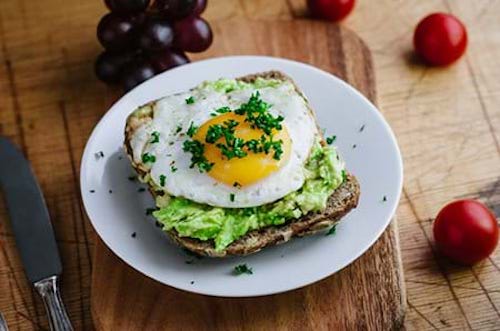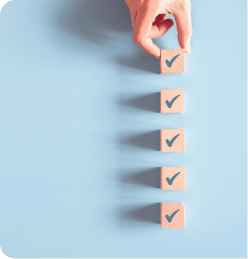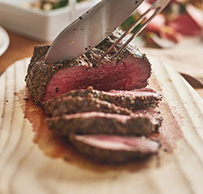“Healthy eating” is a phrase that leaves many women stressed out and frustrated. That’s because many of us feel torn between the tsunami of fat-filled and sugar-laden temptations that comfort us and the stark options of diets that are “paleo”, “gluten-free” or “Whole 30®.”

Many of my patients want to eat healthy to feel and look better but they often tumble down the rabbit hole of following the crowd onto every new diet. After spending hundreds of dollars on unappetizing specialty foods that they don’t even eat, many women don’t feel healthier and haven’t lost any weight either.
Women fail on so-called healthy eating diets because they’re overloaded with restrictive rules, too much information and contradictory guidance.
What does eating healthy really mean?
Just because some people are eating “vegan” or “caveman” doesn’t mean they’re truly eating healthy. Having to empty your fridge and overhaul your entire life makes it nearly impossible to follow many “healthy” weight loss plans. Sure, eating better does involve food changes and shifts, but if something is supposed to make you better, shouldn’t it reflect you and the way you live?
The answer is yes. Real healthy eating helps you stay well and achieve your best weight and here’s how to get started today.
5 simple steps to healthy eating
1. Set realistic goals that fit your life.
Before taking a healthy eating journey, you must know your destination. Or at least have a good idea of the direction you want to follow.
Make a list of your goals for a healthy diet. For many women, those are “weight loss” and “feeling better day to day”. Now, what are willing to do to reach your goals? Be honest with yourself to ensure that your plans fit with your lifestyle from the get-go. If your goal is “stop eating sugar,” you probably know that completely eliminating sugar is not realistic, and will most likely lead to a sugar binge. Tell yourself, “I want to stop eating added sugar” And write it down. Then consider the small steps you can take to move toward your destination.
Top tip to get started
First identify where you typically add sugar in your diet. If it’s a coffee thing, then put away the sugar bowl and taper down the sweetener in your daily coffee until it’s gone. When you apply steps one at a time, you’ll get used to the new pattern and be able to move on to the next phase. If something doesn’t feel right, it’s not for you. Stop, reevaluate and try a different approach.
2. Eat intentionally.
One of the first things I advise for eating healthier is: write everything down! Keep track of every morsel you eat to stay aware of what, how, where and why you are eating. A 2008 study from Kaiser Permanente’s Center for Health Research (one of the largest and longest running weight-loss clinical trials) found that keeping a food diary can double a person’s weight loss!
Top tip to get started
Use modern technology to your advantage and choose one of the great smart phone applications that help you easily track your daily food intake.

3. Recognize food is fuel.
Food is more than something to eat — it’s used to create cells, build tissues and provide optimal conditions for health and wellness. To be your best, you need high-quality fuel but you don’t have to spend thousands of dollars at a gourmet grocery store. Just think about what you buy and make the best choices you can with the money you have. Here are some ideas:
- Skip processed foods: Typically these foods come in jars, bags and boxes and are full of added sugar, sodium and saturated fats.
- Stick to 100% whole grains: These easy-to-find grains still have their coating full of essential nutrients and fiber.
- Aim for organic: If organic is too pricey, thoroughly wash all produce.
- Always go for fresh fruits and vegetables: Especially those that are in season. If fresh is not an option choose frozen over canned.
- Buy “local” whenever you can: Locally-grown foods do not need chemicals to protect them for travel and are always in season.
Top tip to get started
Choose one of these ideas and try it for a week. Then, when it feels right, add another.
4. Make a week-long meal plan and cook at home.
The best way to keep the food you eat healthy is to make it yourself. Foods from your own kitchen won’t have preservatives, hidden fats, added sugars or fillers and you can learn to make your favorite foods healthier. For example, if you love pizza, blend spinach into your sauce and top it off with lots of vegetables.
Preparing your own food makes it a lot easier to plan ahead, and that helps you control what you eat most of the time. If you spend one day preparing a week’s worth of breakfasts, lunches and dinners, you won’t need to think about your meals again till the next week.
Top tip to get started
If preparing a full week of meals seems daunting, make lunch and dinner at home for the first 3 days and see how it goes!

5. Love what you eat.
Find healthy foods you love and swap them out for “bad” choices. If you don’t like kale, don’t eat it. Try spinach, arugula or even beets instead. Depriving yourself of foods you like will lead to failure. All your food changes must fit you well or they won’t stick.
Top tip to get started
When it’s time for a snack or meal, sneak in foods that are super healthy. One of my favorite snacks is:
- 2-3 cups of raw spinach
- 2 Granny Smith apples
- a handful of green grapes
- a tablespoon each of lemon juice and water
Just throw these ingredients into a high speed blender for a delicious, healthy smoothie that’s very tasty and filling. I feel incredibly refreshed after drinking this mixture! Make it the night before so you can just grab it and go to tamp down mid-day hunger pangs.
Mix and match the changes that work for you
Creating a healthy diet doesn’t have to be stressful if you slowly fold in adjustments that fit your lifestyle. Keep changes small and consistent and don’t punish yourself if you slip a little one day. Stay aware and keep your eyes forward, and if something doesn’t work, just regroup and try again.
As you transition toward eating better, keep your eyes on the prize as they say. A healthy diet is not as far away as you may think. As long as you keep it simple, accept which changes you can or cannot make, you will be on your way to a healthier, happier (and lighter) you.
So quit stressing and start eating!
Hollis JF, et. al “Weight Loss During the Intensive Intervention Phase of the Weight-Loss Maintenance Trial” American Journal of Preventative Medicine August 2008, Vol 35, Issue 2, Pgs 118-126










